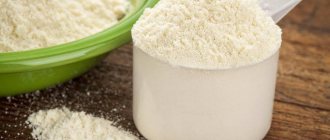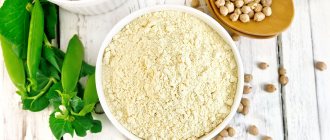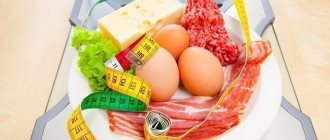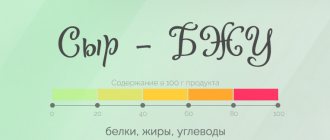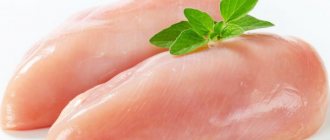Updated: 04/23/2021 15:27:23
Expert: Dina Shulman
Proteins are the most important nutrients in the human diet. You can get them from both animal products and plant foods. But nutritionists warn that their value varies. Our experts found out how animal and plant proteins differ, what their main sources are and which are more valuable for the body. We will also find out why the health of vegetarians may be at risk.
Proteins: role in the human body, types
Proteins (proteins) are organic compounds that serve as the main building materials for cells and tissues of the body. They consist of amino acids (AMA) connected by a peptide bond, which make up muscles, tendons, ligaments, internal organs, and partly bones and cartilage.
Proteins perform a number of important functions in the body:
- participate in the metabolism of fats, carbohydrates, minerals and vitamins;
- form antibodies that protect against bacteria and viruses;
- transport oxygen in the circulatory system;
- transmit genetic information;
- regulate the activity of the central nervous system and brain;
- ensure the normal condition of skin, teeth, hair and nails;
- serve as a source of energy (1 g of protein provides 4 kcal).
About 500 amino acids are known, but only 22 are involved in human life. 12 of them can be independently synthesized in the intestines from fat, carbohydrates and other amino acids, and 8 are essential. These include:
- valine – essential for muscle metabolism and proper functioning of the nervous system;
- isoleucine – promotes the restoration of muscle tissue after heavy physical exertion, plays the role of a modulator of the immune system;
- leucine – participates in metabolic processes, the production of insulin and hemoglobin;
- threonine – part of collagen and elastin, needed for the formation and preservation of strong bone tissue and immunity;
- methionine – neutralizes toxins, participates in the synthesis of enzymes, ensures strong hair and nails;
- lysine – necessary for normal protein absorption, muscle tissue growth, collagen and elastin synthesis;
- phenylalanine – participates in the production of many enzymes, helps the liver and kidneys remove metabolic products;
- tryptophan - necessary for the production of serotonin - the “hormone of happiness” and vitamin B3 (niacin), regulates mood and sleep.
These amino acids enter the body only with protein foods of animal or plant origin - they are not produced independently.
In addition to the essential ones, there are 7 more conditionally essential amino acids:
- arginine – regulates hormonal levels and the functioning of the cardiovascular system;
- histidine – promotes oxygen supply to organs, restores damaged tissues, strengthens the immune system;
- glutamine – supports the immune system, affects muscle growth, prevents degenerative neurological diseases;
- glycine – participates in the functioning of the central nervous system, digestive system, production of collagen and elastin, protects against cancer;
- proline – necessary for the formation of cartilage tissue, healthy joints, muscles and skin;
- tyrosine – affects the production of hormones, increases concentration, protects the body from the development of depression and its consequences;
- cysteine – promotes muscle endurance, detoxification of the body, protects against radiation and the development of cancer.
These amino acids are synthesized in the intestines independently, but only if there is a complete supply of nutrients from food and the production of certain enzymes and hormones. During periods of illness or heavy physical activity, their production may be insufficient to meet the metabolic needs of the body.
Proteins are divided according to their amino acid content:
- to full-fledged ones, which include all the essential AMKs;
- to inferior ones, containing insufficient amounts of amino acids.
In addition, proteins differ from each other in the degree of absorption - biological value. Some are absorbed by the body almost 100%, others - only 30%.
Knowing the nuances of the composition of amino acids and the digestibility of protein foods, you can become more familiar with the characteristics of animal and plant proteins, understand how they are similar and how they differ from each other.
Vegetarianism
Proper nutrition according to a vegetarian diet is a whole science that requires knowledge of the chemical composition of each product. Often “beginners” feel discomfort, fatigue and digestive problems. But masters know that the advantage of vegetarianism is a varied diet. Vegans and vegetarians are constantly looking for new plant-based foods, which is why the pseudocereal quinoa from South America has become popular.
Expert opinion
Karnaukh Ekaterina Vladimirovna
Graduated from the National University of Shipbuilding, majoring in Enterprise Economics
According to nutritionists, animal protein can be equivalently replaced with vegetable protein, but not in quantity, but in the quality of food. In order for the body to have enough amino acids, you do not need to eat a lot of vegetables or soy - it is important to combine them so that in the end the body receives all the necessary substances. For example, rice provides methionine, and beans provide lysine. The combination of products will make the desired set.
Health problems arise when abruptly abandoning products with animal protein, improper combination and preparation of plant components.
When beans are consumed in large quantities, an excess of phytin occurs in the body and, as a result, flatulence. Beans need to be soaked longer and combined with quinoa or eggs for better protein absorption.
It is also important to choose the right amount of protein, which is done individually taking into account physical activity. In this case, the transition to plant foods will take place without side effects.
Features of animal proteins and their sources
Animal proteins contain a full range of essential and conditionally essential amino acids, and are therefore considered complete.
Their main sources are meat, fish, and seafood. Dairy products and eggs are also rich in it.
The table shows sources of animal protein and their quantitative content in food products.
| Product name | Protein content, g per 100 g |
| Chicken fillet | 27-29 |
| Turkey fillet | 21-23 |
| Beef, pork | 19-22 |
| Liver | 18-20 |
| By-products | 15-17 |
| Sausage | 12-14 |
| Fish roe | 28-31 |
| Red fish | 28-30 |
| White fish | 18-20 |
| Shrimps | 17-19 |
| Cheese | 24-26 |
| Cottage cheese | 15-17 |
| Eggs | 12-13 |
| Dairy products | 3-4 |
| Milk | 2-3 |
In addition, proteins from animal foods have high biological value. For example, protein from a chicken egg is absorbed by the body by 97% (the highest digestibility rate among all protein products), cottage cheese - by 93%. Protein is absorbed better from fermented milk products than from whole milk.
Regular consumption of sufficient amounts of food of animal origin is a guarantee that the body will receive the amount of protein it needs (60-90 g per day) to perform essential functions.
How to properly consume protein?
If you do choose meat as your primary source of protein, consider ensuring that it is raised humanely and without the use of hormones, antibiotics or steroids. The animals themselves need to be healthy and fed on pasture or organic feed to, in turn, provide you with healthy proteins.
The method of cooking the meat is also important. Beef and fish, for example, may not be fully cooked, which makes them easier to digest. Pork and chicken, in turn, must be completely cooked. But this makes them more acidic and less digestible. Therefore, we do not recommend eating pork.
Plant foods should be cooked carefully, or simply eaten raw. A properly prepared shake can provide you with about 30 grams of protein in a highly digestible form. If you add quinoa and a plate of vegetables, you get a protein-rich meal.
Features of plant proteins and their sources
Plant proteins have a poorer amino acid composition; they may lack 2-3 essential amino acids (although the total number of amino acids in them may be even greater than in meat). Their sources (contents indicated per 100 g of product):
- soybean – 33-35 g;
- beans – 22-25 g;
- lentils – 21-23 g;
- mung beans (mung beans) – 23-25 g;
- chickpeas (chickpeas) – 19-21 g;
- nuts, seeds – 16-20 g;
- bran – 19-21 g;
- peas – 12-14 g;
- pasta from durum wheat – 11-13 g;
- buckwheat –11-13 g;
- oatmeal – 10-12 g;
- wheat and cereals based on it – spelt, bulgur – 10 g;
- mushrooms – 3-4 g;
- vegetables – 2-3 g.
Soy protein is as close in composition as possible to animal proteins (contains 7 essential amino acids - only methionine is missing). Soy milk, tofu cheese, soy sprouts, and alfalfa are rich in it. These products can be a good alternative to meat.
Lack of plant proteins – low biological value. They are absorbed by the body only 1/3. To get your daily protein intake and all the essential amino acids from plant foods, you need to consume legumes, nuts and grains in sufficiently large quantities every day.
Protein-rich foods:
The indicated amount is approximate amount per 100 g of product
87.2 g Edible gelatin 37.1 g Ground mustard 34.9 g Soybeans 30.2 g Pumpkin seeds 28.9 g Sturgeon caviar Powdered milk 28.5 g 26.3 g Peanuts 24.3 g Cervelat cocoa powder 24 g Cheese “Russian” 23.2 g 23 g Peas 22.7 g Tuna 22 g Beans 22 g Cottage cheese 22 g Chum salmon
| + Another 40 protein-rich foods (the number of grams per 100 g of product is indicated): | ||||||||||
| Turkey | 21,6 | Halibut | 18,9 | Brynza | 17,9 | Boiled sausage | 12,1 | |||
| Chicken leg | 21,3 | Veal | 19,7 | Herring | 17,7 | Millet | 12,0 | |||
| Rabbit meat | 21,2 | Beef | 18,9 | Beef liver | 17,4 | Oatmeal | 11,9 | |||
| Pink salmon | 21 | Pork liver | 18,8 | Pork kidneys | 16,4 | Pork is fatty | 11,4 | |||
| Shrimps | 20,9 | Lamb liver | 18,7 | Hazelnut | 16,1 | Wheat bread | 7,7 | |||
| Chickens | 20,8 | Chickens | 18,7 | Pollock | 15,9 | Butter pastries | 7,6 | |||
| Salmon | 20,8 | Almond | 18,6 | Heart | 15 | Rice porrige | 7 | |||
| sunflower seed | 20,7 | Squid | 18 | Walnut | 13,8 | Rye bread | 4,7 | |||
| Small saury | 20,4 | Mackerel | 18 | Doctor's Varenka | 13,7 | Low-fat kefir | 3 | |||
| Mutton | 20 | Low-fat cottage cheese | 18 | Buckwheat core | 12,6 | Milk | 2,8 | |||
Daily protein requirement
The recommended protein requirement for an adult is 0.8 g per 1 kg of weight. This indicator can be found in tables for calculating ideal body weight. The actual weight of a person is not taken into account in this case, due to the fact that amino acids are intended for cellular mass of the body, and not for fat deposits.
According to the rules of dietetics, protein foods should make up about 15% of the total calorie content of the daily diet. Although this indicator may vary depending on the type of activity of a person, as well as his state of health.
The need for proteins increases:
- During illness, especially after surgery, as well as during the recovery period.
- During work requiring strong physical stress.
- In the cold season, when the body spends more energy on heating.
- During intensive growth and development of the body.
- During sports competitions, as well as preparation for them.
Protein requirements decrease:
- During the warm season. This is due to chemical processes in the body that occur when exposed to heat.
- With age. In old age, the body renews itself more slowly, so less protein is required.
- For diseases associated with the digestibility of proteins. One such disease is gout.
Protein digestibility
When a person consumes carbohydrates, the process of digesting them begins while they are in the mouth. With proteins, everything is different. Their digestion begins only in the stomach, with the help of hydrochloric acid. However, since protein molecules are very large, proteins are quite difficult to digest. To improve the absorption of proteins, it is necessary to consume foods that contain protein in its most digestible and light form. These include egg whites, as well as protein contained in fermented milk products such as kefir, fermented baked milk, feta cheese, etc.
According to the theory of separate nutrition, protein foods go well with various greens and leafy vegetables. Modern nutritionists claim that protein is better absorbed in the presence of fats and carbohydrates, which are the main sources of energy for the body.
Since protein foods stay in the body much longer than carbohydrate foods, the feeling of fullness after eating proteins lasts much longer.
Myths about 3-4 grams of protein per day per kg of weight
However, some bodybuilding sources write about 3-4 grams of protein per kilogram of weight. Take, for example, an 80-pound athlete. In his case, he needs to consume 320 grams of protein per day to successfully gain muscle mass - this is, for example, 1.5 kilograms of turkey fillet, 50 chicken eggs or 10 liters of milk. Of course, it is very difficult to eat that much food, so we are told that we need to take protein shakes, otherwise the muscles will not grow.
There is no need (and no scientific evidence) to consume 3-4 grams of protein per pound of weight in an effort to gain muscle mass. The diet of a modern person almost always contains meat, cottage cheese, cheese, milk, eggs, legumes and other protein products, by consuming which you can easily cover your daily protein requirement and gain muscle mass. Of course, if for some reason you cannot gain 1.4-1.8 g of protein per kilogram of weight from regular food, then it makes sense to resort to using protein supplements.
Marion Nestle, a nutritionist at New York University, argues that Americans already consume too much protein, as it is abundant in both animal and plant foods.
In the United States, there is no evidence that the population is undernourished in protein. The only reason companies actively advertise protein supplements is marketing. It's not about health, it's about marketing. Protein supplements are a great marketing tool, which is why they are so heavily advertised and persuade people to buy them [6].
In the USA, even ice cream advertisements list the protein content as 100 g.
Harm from Excessive Protein Consumption
Protein really plays a very important role in our body. A person cannot be healthy if he does not consume enough protein. However, excessive consumption is also associated with health risks.
Unfortunately, not much research has been conducted on this topic and not all of it is convincing. According to one study, excessive consumption of animal protein increases the risk of kidney stones by 250%. (Robertson WG, Heyburn PJ, Peacock M, Hanes FA, Swaminathan R: The effect of high animal protein intake on the risk of calcium stone formation in the urinary tract.)
Also, increased protein intake may be associated with the development of osteoporosis, however, these data are very contradictory and it is impossible to make a clear conclusion whether this is the case.
Therefore, it is not clear whether excess protein intake may be harmful to the kidneys and skeletal system. However, if you have kidney problems, it is advisable to consult a doctor before starting a high-protein diet, as it puts a serious strain on the body.
Another problem with increased protein intake is dehydration. However, the solution to this problem is simple - you just need to drink plenty of water, even if you don’t feel thirsty.
According to one study conducted at Yale University, excessive consumption of animal protein increases the risk of developing stomach cancer. At the same time, when consuming plant protein, this risk of stomach cancer was reduced.
There is evidence that red meat, such as beef, pork, veal, and venison, is carcinogenic. Some scientists associate increased consumption of red meat with the development of intestinal cancer. Of course, there is no need to completely eliminate red meat from our diet, just limit yourself to 70 grams per day.
In fact, it is very difficult to determine whether red meat in itself is really so carcinogenic, or whether bowel cancer is more influenced by a combination of various factors, namely the Western lifestyle - large amounts of refined sugar in food, alcohol, low consumption of fruits and vegetables.
To summarize, overconsumption of protein does not pose a major threat to our health, at least if your high-protein diet consists of mostly plant-based protein.
There is no need to give up animal protein, but it is advisable to also include legumes, nuts and grains in your diet. In any case, nutrition should be balanced. Despite the fact that there is no clear proven harm from increased protein intake, at the same time, there is no benefit to it, just as there is no benefit from excessive consumption of fats and carbohydrates. The body's resources for the rate of protein absorption are not infinite, and if they are exceeded, harm to health is possible.
We must be aware that we already consume enough protein from normal food, both to maintain general health and to gain muscle mass, and to lose weight. Therefore, there is no need to struggle to stuff yourself with kilograms of chicken a day or drink a protein shake three times a day. Everything has its own measure.
Similarities and differences between animal and plant protein
Animal and plant protein contain amino acids necessary for the human body. Thanks to their regular intake from food, we get energy, absorb nutrients, build muscle mass, etc. In this they are similar.
But there are more differences between plant and animal proteins:
- have different amino acid compositions - proteins from plant foods are poor in essential AMK (may contain only 2-3 out of 8);
- animal protein has high biological value and is almost 100% absorbed in the digestive tract.
Protein products of plant origin, unlike animal ones, do not provide the necessary balance of amino acids in the body: the absence of one can serve as an obstacle to the absorption of others.
This is why vegetarians risk their health - an inadequate diet that does not contain meat can lead to serious problems with the nervous, endocrine, and cardiovascular systems of the body. To prevent this, it is necessary to ensure sufficient daily consumption of different groups of protein plant foods.
Weakness, drowsiness, forgetfulness, frequent headaches and colds can be the first signs of protein deficiency.
What are “incomplete” proteins?
Protein is made up of building blocks called amino acids. Although there are hundreds of amino acids found in nature, only 20 are needed to make all the protein in your body. They can be divided into three main categories (1):
- Essential amino acids. Essential amino acids are made up of nine amino acids that your body cannot produce. The only way to get these amino acids is to eat foods that contain them.
- Nonessential amino acids. This category includes the remaining 11 amino acids that your body can normally produce from the 9 essential amino acids.
- Conditionally essential amino acids. These amino acids are generally considered nonessential, but become essential during adolescence, pregnancy, or certain conditions such as injury or illness.
Foods that contain good amounts of all nine essential amino acids are generally considered sources of “complete” protein, while foods that do not are considered “incomplete.”
Conclusion:
Protein is made up of amino acids, which can be classified as essential, non-essential or conditionally essential. Protein-rich foods are generally classified as “complete” or “incomplete” based on the amount of essential amino acids they contain.
What foods contain “incomplete” proteins?
Contrary to popular belief, most foods—both animal and plant—contain all nine essential amino acids. The difference lies in their quantity.
For example, meat, fish, eggs and dairy products contain high levels of all nine essential amino acids. On the other hand, plants typically contain small amounts of at least one or two essential amino acids, depending on the category to which they belong.
For example, legumes and vegetables tend to be low in methionine and cysteine, while grains, nuts, and seeds tend to be low in lysine (2).
In practice, this means that eating a diet that contains too little of any one food group may result in not getting enough essential amino acids.
This is why animal foods are generally considered sources of “complete” protein, while most plant foods are considered sources of “incomplete” protein.
The exceptions are soy, quinoa, amaranth, buckwheat and nutritional yeast, as well as hemp and chia seeds. These plant foods contain high amounts of all nine essential amino acids and are considered sources of “complete” plant protein.
Conclusion:
Most plant foods are generally considered sources of “incomplete” protein, with a few exceptions. In contrast, animal products are considered “complete” proteins.
Can you get enough complete protein on a vegetarian or vegan diet?
Many people feel that because vegetarian and vegan diets are low in animal protein, they often lack “complete” protein.
However, with rare exceptions, this happens very rarely.
There is currently no evidence of protein deficiency among vegetarians or vegans, except perhaps in the small percentage of people who eat too few calories or follow monotonous or restricted eating patterns, such as fruit-based or potato-based diets (3).
However, protein found in plants can be a little harder on your body compared to protein from meat and other animal products.
This is why vegetarians and vegans are sometimes advised to eat a little more protein than meat eaters, which is about 1 gram per kg of body weight per day (4).
However, current evidence suggests that this difference in absorption is likely too small to mean that vegetarians or vegans are not getting enough essential amino acids from their diet (3).
In short, as long as a plant-based diet remains adequately calorically dense and offers a wide variety of protein sources, there is no reason to worry that a vegetarian or vegan diet will be too low in “complete” protein.
Conclusion:
Vegetarians and vegans will have no problem getting enough “complete” protein from their diet, that is, as long as the diet remains varied and adequate in calories.
Sources
- https://doctorbormental.ru/kb/produkty/bogatye-belkom-produkty/
- https://edaplus.info/proteins.html
- https://cmtscience.ru/article/gid-po-belk-m
- https://cross.expert/zdorovoe-pitanie/bzu/zhivotnyj-i-rastitelnyj-belok.html
- https://www.magicworld.su/pitanie/1476-nepolnotsennyye-belki.html
[collapse]
The benefits and harms of each type of protein
Despite the obvious superiority of animal proteins over plant proteins, it cannot be said that they are definitely healthier. Yes, we get the amino acids we need from eggs, meat and dairy products, but it is necessary to take into account their overall nutritional value and vitamin and mineral composition.
There are several nuances that are important to take into account.
- Protein foods of animal origin contain saturated fatty acids, which are transformed in the digestive tract into “bad” cholesterol. Excessive consumption of animal fats causes atherosclerosis (deposition of cholesterol on the vascular walls) and leads to strokes and heart attacks.
- According to a study by American scientists, people who frequently eat red meat are more likely to suffer from cardiovascular diseases and cancer.
- Protein plant products are rich in dietary fiber, which is necessary for normal intestinal function (they are not found in food of animal origin). They also contain many vitamins and antioxidants, macro- and microelements, without which the body cannot function normally.
- Legumes contain special compounds - enzyme inhibitors. They promote the rapid removal of toxic substances from the body, prevent the development of inflammatory reactions and the occurrence of cancerous tumors.
- Unlike beans and cereals, only meat contains methionine and vitamin B12, which is important for the normal functioning of the nervous system.
- Animal foods contain heme iron, which is absorbed by the body much better than non-heme iron from protein plant foods.
- Chicken egg white is a highly digestible source of essential amino acids, but often causes allergic reactions.
- Soy products could be ideal meat substitutes. But they contain phytoestrogens - analogues of female sex hormones. Their frequent use can cause breast cancer in women with a genetic predisposition; in men, the risk of developing female-type fatty deposits and the development of gynecomastia increases.
- The healthiest foods for getting complete protein are fish, seafood, chicken and turkey. They contain virtually no saturated fats (sea fish contains healthy unsaturated omega fatty acids), and contain vitamins B, A, D, zinc, iron, selenium, and potassium.
Some types of meat can cause illness
Red meat is a source of high-quality protein.
Several observational studies have linked red meat consumption to an increased risk of heart disease, stroke and early death.
However, further research has shown that the problem is not with all red meat, but with processed red meat.
In a large observational study of 448,568 people, processed meat was associated with an increased risk of death, with no effect for unprocessed red meat.
Another study of more than 34,000 women showed similar observations. In this case, processed meat was linked to heart failure.
Additionally, a large review of 20 studies found that processed meats are associated with an increased risk of heart disease and diabetes. Again, no association was found with unprocessed red meat.
Additional research has confirmed that consuming unprocessed red meat is not associated with heart disease.
Despite this, one study found that replacing 1 serving of red meat per day with 1 serving of poultry was associated with a 27% reduction in the risk of stroke.
Additionally, the health risks associated with processed red meat are not associated with fish and other meats such as turkey and chicken.
Bottom line: Processed red meat is associated with an increased risk of disease. Unprocessed red meat and other lean meats are generally healthy.
Protein foods for gaining muscle mass
To gain muscle mass, protein nutrition is used. Here you need to understand that muscle mass begins to increase only when the amount of energy supplied by food exceeds the amount expended. But this does not mean that if you eat a lot of protein foods and lie on the couch, your muscles will begin to grow on their own. Eating protein in your diet is essential for proper nutrition, but you also shouldn’t forget about counting calories for both weight loss and muscle gain. However, daily training is required.
To ensure that protein from food is well absorbed, be sure to drink plenty of clean water. Sweet drinks, cocoa, coffee, juices are prohibited. Carbohydrates and fats should make up 30% of the total diet. 70% is distributed between protein products:
- raw eggs;
- boiled egg white;
- low-fat cottage cheese;
- cooked chicken meat (breast without skin);
- boiled squid;
- lean sea fish;
- nuts, legumes.
It is preferable to get carbohydrates and fats from:
- natural yogurt;
- kefir;
- oatmeal and buckwheat cooked in water (without sugar, oil and salt);
- vegetables, low-calorie fruits (grapes, bananas, potatoes and pears are not allowed).
The protein intake rate for athletes is 2 g per 1 kg of weight.
Professionals recommend consuming animal protein for a greater effect on gaining muscle mass.
- Start consuming protein at the minimum daily value for athletes – 1.5 g per 1 kg of body weight.
- If no effect is observed, increase the rate to 2-2.5 g of protein.
You can compose the required diet of protein products yourself using the table above. For example, in the daily diet of an athlete weighing 85 kg, it is necessary to include: 0.5 kg of chicken meat, 200 g of cottage cheese, 5 eggs and 0.5 liters of fat milk. You can alternate with fish, legumes, etc. Calorie intake to gain muscle mass should be increased almost 2 times. Only in combination with grueling strength training is a rapid gain of muscle mass possible. You can get more detailed information about protein nutrition for athletes from the video:
Protein Digestibility Chart
Protein Source Digestibility Rate
| Milk | 100% |
| Supro isolated soy protein | 100% |
| Beef | 92% |
| Fish | 92% |
| Other isolated soy protein | 92% |
| Mechanically separated poultry meat | 70% |
| Canned beans | 68% |
| Oats | 57% |
| Rice | 54% |
| Peanut | 42% |
| Corn | 42% |
| Wheat gluten | 27% |
Tips and tricks
In order for protein foods to bring only benefits to the body, you should follow a few simple recommendations:
- you should not completely give up animal proteins; it is advisable that your diet contains at least fermented milk products; for those who adhere to strict vegan diets, it is necessary to compensate for the lack of essential amino acids with the help of pharmaceutical preparations or complex dietary supplements
- It is extremely undesirable to compensate for the lack of protein with purified protein powder, which creates additional stress on organs such as the kidneys and pancreas and disrupts the functioning of the digestive tract
- Animal proteins must be present in the diet of pregnant and lactating women and children
Now protein diets have come into fashion, helping to lose weight quickly and without much discomfort. But here you need to remember that excess protein contributes to the removal of some important microelements from the body, in particular calcium. This leads to bone fragility and the development of osteoporosis. Therefore, you should use protein diets only after consultation with your doctor.
Protein foods - food list
Above we gave a list of protein foods with their calories, fats, carbohydrates and protein content. Here is another table of protein foods with protein content per 100 grams of product:
- Egg powder - 45.0;
- Cheese cheese - 18.0;
- Hard and processed cheese - 23.4-29.0;
- Cheesecakes, casserole - 16.4-18.9;
- Liver pate - 18.0;
- Canned meat - 15.0-20.0;
- Cutlet, chop - 20.0;
- Soy protein isolate - 90.0;
- Ham - 22.6;
- Lamb kebab - 22.9;
- Cervelat - 24.0;
- Smoked salmon - 25.4;
- Pasta - 10.0–11.3;
- Beefsteak - 28.8;
- Sausage mince - 15.2;
- Cottage cheese - 14.0–18.0;
- Boiled veal - 30.7;
- Ham - 14.3.
Benefit
The human body cannot exist without a constant supply of protein substances. After all, the structural, regulatory, and transport proteins of the body must be constantly updated. The lifespan of many enzymes is several hours, and structural proteins (from which cells are built) live for 2-3 days.
The benefits of protein foods for the body are obvious:
- Protein-rich foods help maintain healthy and attractive appearance of hair, skin, and nails
- a diet with a balanced content of protein substances ensures normal synthesis of enzymes, protective proteins (immunoglobulins), helps maintain normal hormonal levels
- Protein foods provide the body with energy during increased physical activity
- Protein substances promote weight loss, since the body spends more energy on the breakdown of protein than on the breakdown of carbohydrates or fats



